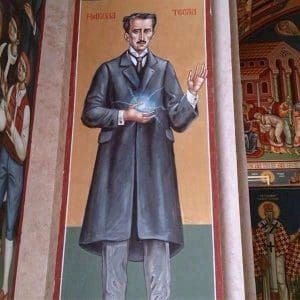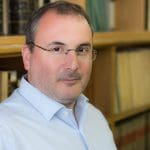
The other Christians: Science and Orthodox Christianity
By Kostas Tampakis
Science and Religion, as a field of study, is flourishing. This is an easy assessment to make, if one considers the number of conferences, articles, books and dedicated journals that operate within the broad boundaries of the field. A subtler sign of the field’s growth is to be found in the disciplines that Science and Religion scholars have brought into the field in recent years. As last year’s INSBS conference in Birmingham showed, and as the 2021 conference in Stellenbosch will no doubt verify, the core disciplines of history, philosophy and theology have been enriched by the inclusion of sociology, anthropology and psychology, among others. Even more importantly, to my mind at least, Science and Religion scholarship is at last moving away from a European and American, predominantly Christian focus, to include Asian, African and subaltern perspectives.
As the Science and Religion field expands however, it would be easy to miss that even in the old days of Christian eurocentrism, a big chunk of the Christian world was missing from the scholarship. Orthodox Christianity is the second largest Christian denomination, encompassing almost 270 million adherents on all five continents, but mostly prevalent in Russia, Ukraine, Belarus, Georgia and the Balkans. Yet, looking back even fifteen years ago, one would have been hard-pressed to find articles on the relations between Orthodox Christianity and science in the many anthologies of the era. The Blackwell Companion on Science and Religion (2012) focused more or less completely on Roman Catholicism and the Protestant denominations. The Cambridge Companion to Science and Religion (2010) completely bypassed Eastern Christianity. The groundbreaking Science and Religion: New Historical Perspectives (2010) and Science and Religion around the World (2010) did the same. This was the status of the field when Efthymios Nicolaidis of the National Hellenic Research Foundation (NHRF), urged on by Ronald Numbers, published his Science and Eastern Orthodoxy: From the Greek Fathers to the Age of Globalization in 2011. Strange though it may sound, this was the first book of its kind on Orthodox Christianity and science relations.

Medieval Aristotelians believed that nature abhors a vacuum. Scholarship abhors a vacuum even more. Thus, from 2012 onwards, a series of research projects were organized to tackle the lack of what we thought initially to be an historiographical void. The institutional locus was once again the Institute of Historical Research of the National Hellenic Research Foundation. Project NARSES aimed to bring under one bibliographical roof, all Greek primary sources relevant to science and Orthodox Christianity. However we soon discovered that the academic lacuna was much greater, and in fact, it resembled more an archipelago than a void. Primary sources were abundant, not only in Greek, but also in Russian, French, English and in most languages where Orthodox Christians are the majority. There was also a sustained production of books and articles that dealt with the relationship and interaction between science and Orthodox Christianity, tangentially or not, that spanned decades. And yet, these authors were rarely communicating with each other, and very rarely engaged with more general scholarship on science and religion. There was a plethora of voices, opinions and informed research, but very little synthesis and interaction.
It was this realization that led our team at NHRF to pursue a mapping of the field. With the generous support of the Templeton Foundation, we embarked on a three-year journey to map all recent scholarship concerning Orthodox Christianity and science, in all major languages of Orthodox writing, Bulgarian, English, French, Georgian, German, Greek, Romanian, Russian, Serbian and Ukrainian (Project SOW). We also organized conferences and summer schools and sponsored articles and books on the same subject. Our initial belief, that there was a wealth of material which had not been recognized due to sporadic appearance in mainstream scholarship, was validated. By July 2019, the SOW online database had 5000 entries.
What, then, has come out from this first mapping? This is too complicated a question for a brief answer. But perhaps two brief examples can highlight the differences that emerge. Firstly, the categories of analysis Science and Religion scholarship usually takes for granted do not easily apply to Orthodox Christianity. Orthodox religious thought is organized along different lines. Anthropos in Orthodox thought retains its etymological significance of the whole human being, envisaged as the totality of its materiality, spirituality and divine creation. A Logos of the Anthropos in Orthodox discourse could, and does, encompass discussions of all these aspects of being human, as well as their interactions with the rest of the world. An Orthodox anthropology addresses not only theological discussions of what is meant to be human in a divinely created world, but also much of modern psychology and psychoanalysis, discussed from an Orthodox perspective. Another prominent example is the term Creation. In Orthodox discourse, this encompasses the entirety of the world. It can thus contribute to discussions about the origins of the Universe which would fall under cosmology, but also about an Orthodox perspective on what we would call ecological and environmental issues. Finally, Creation also encompasses humanity, and thus discussions about Creation often intersect with what we have described above as Orthodox Anthropology. Another example is how the historical relationship between science and Christianity is discussed without reference to Western staples of the White-and-Draper chronology. If anything, the historical discussion is subsumed to the philosophical, which is usually framed in a hermeneutic or a Heideggerian framework. These two examples do not, of course, do justice to the variety of the field. But they do point on the many ways an integration of the case of Orthodox Christianity in the general Science and Religion scholarship can help both parties. After 8 years, our team at NHRF feels like it has barely scratched the surface. Medieval alchemists, following Al-Razi, used to say that “liber enim librum aperit”: one book opens another. In the Science-Orthodox Christianity scholarship this is certainly true, and the books that remain unopened are numerous. Perhaps you would consider joining the effort to open them?

Kostas Tampakis is a Postdoctoral Researcher in the National Hellenic Research Foundation. As a researcher in project NARSES, he helped create an archive of all Greek sources on Science and Religion, from the 4th century AD to the present. As a main researcher of Project SOW, he worked on the relations between Orthodox Christianity and the Natural Sciences on all languages of Orthodox discourse. For more about Kostas’ research see his Research Profile.
